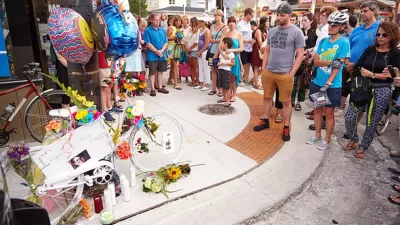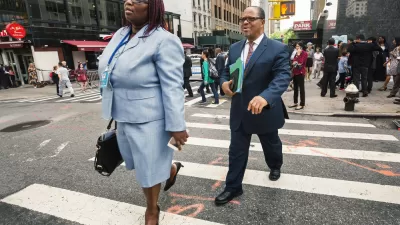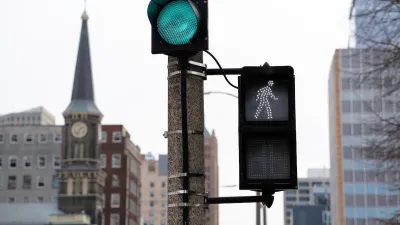Traffic safety and Vision Zero advocates scored a major victory recently at the New York Court of Appeals.

"The Court of Appeals, New York’s highest court, ruled that New York City and other municipalities can be held liable for failing to redesign streets with a history of traffic injuries and reckless driving," reports Brad Aaron.
The ruling dates back to a crash from 2004, when "Louis Pascarella, driving 'at least' 54 miles per hour in a 30 mph zone, struck 12-year-old Anthony Turturro as he rode a bike on Gerritsen Avenue," according to Aaron. "A civil trial jury awarded Turturro $20 million, finding the city 40 percent responsible for the crash. The city appealed, and the case made its way to the Court of Appeals, which last month rendered a 6-1 finding in favor of Turturro."
The case could add ammunition to the idea that transportation engineering and transportation agencies are responsible for unsafe road conditions. The fact that departments of transportation can be held liable when they create or allow unsafe road conditions should inspire more actions to implement traffic calming measures. In New York City, for example, Mayor de Blasio "has resisted calls from the City Council to increase funding for Vision Zero street improvements."
FULL STORY: State’s Highest Court Holds NYC Liable for Injuries on Streets Without Traffic Calming

Manufactured Crisis: Losing the Nation’s Largest Source of Unsubsidized Affordable Housing
Manufactured housing communities have long been an affordable housing option for millions of people living in the U.S., but that affordability is disappearing rapidly. How did we get here?

Americans May Be Stuck — But Why?
Americans are moving a lot less than they once did, and that is a problem. While Yoni Applebaum, in his highly-publicized article Stuck, gets the reasons badly wrong, it's still important to ask: why are we moving so much less than before?

Using Old Oil and Gas Wells for Green Energy Storage
Penn State researchers have found that repurposing abandoned oil and gas wells for geothermal-assisted compressed-air energy storage can boost efficiency, reduce environmental risks, and support clean energy and job transitions.

Poorest NYC Neighborhoods Pay Price for Delivery Boom
The rise of ‘last-mile’ e-commerce warehouses — and their attendant truck traffic and air pollution — is disproportionately impacting the most historically disadvantaged parts of the city.

Greening Oakland’s School Grounds
With help from community partners like the Trust for Public Land, Oakland Unified School District is turning barren, asphalt-covered schoolyards into vibrant, green spaces that support outdoor learning, play, and student well-being.

California Governor Suspends CEQA Reviews for Utilities in Fire Areas
Utility restoration efforts in areas affected by the January wildfires in Los Angeles will be exempt from environmental regulations to speed up the rebuilding of essential infrastructure.
Urban Design for Planners 1: Software Tools
This six-course series explores essential urban design concepts using open source software and equips planners with the tools they need to participate fully in the urban design process.
Planning for Universal Design
Learn the tools for implementing Universal Design in planning regulations.
Heyer Gruel & Associates PA
City of Moreno Valley
Institute for Housing and Urban Development Studies (IHS)
City of Grandview
Harvard GSD Executive Education
Salt Lake City
NYU Wagner Graduate School of Public Service
City of Cambridge, Maryland




























